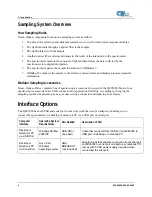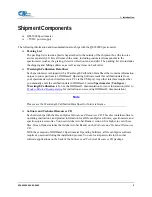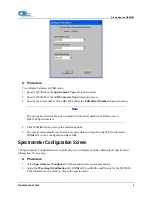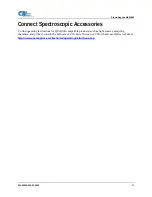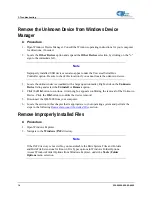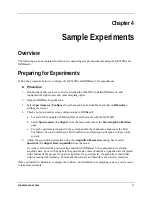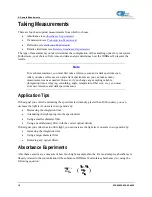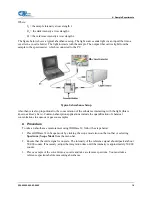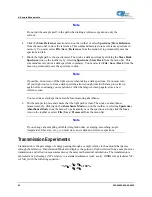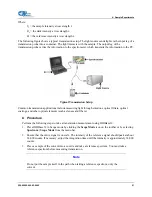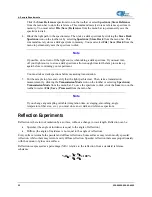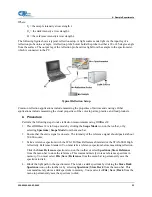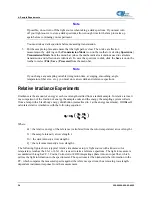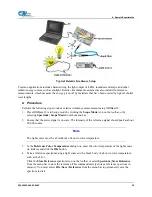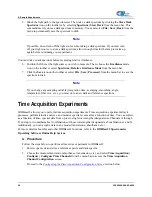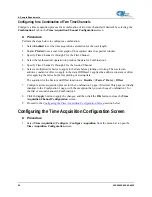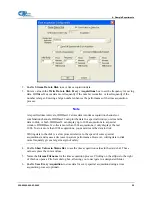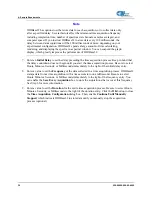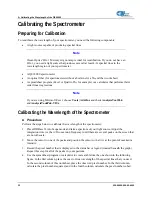
4: Sample Experiments
Taking Measurements
There are four basic optical measurements from which to choose:
•
Absorbance (see
•
Transmission (see
•
Reflection (see
•
Relative irradiance (see
Relative Irradiance Experiments
The type of measurement you take determines the configuration of the sampling optics for your system.
Furthermore, your choice of reference and data analysis determines how the OOIBase32 presents the
results.
Note
For each measurement, you must first take a reference scan and a dark spectrum scan.
After you take a reference scan and a dark spectrum scan, you can take as many
measurement scans as needed. However, if you change any sampling variable
(integration time, averaging, smoothing, angle, temperature, fiber size, etc.), you must
store new reference and dark spectrum scans.
Application Tips
If the signal you collect is saturating the spectrometer (intensity greater than 4000 counts), you can
decrease the light level on scale in scope mode by:
•
Decreasing the integration time
•
Attenuating the light going into the spectrometer
•
Using a smaller diameter fiber
•
Using a neutral density filter with the correct optical density
If the signal you collect has too little light, you can increase the light level on scale in scope mode by:
•
Increasing the integration time
•
Using a larger diameter fiber
•
Removing any optical filters
Absorbance Experiments
Absorbance spectra are a measure of how much light a sample absorbs. For most samples, absorbance is
linearly related to the concentration of the substance. OOIBase32 calculates absorbance (A
λ
) using the
following equation:
S
λ
- D
λ
A
λ
= -
log
10
(
R
λ
-
D
λ
)
18
220-00000-000-02-0605

